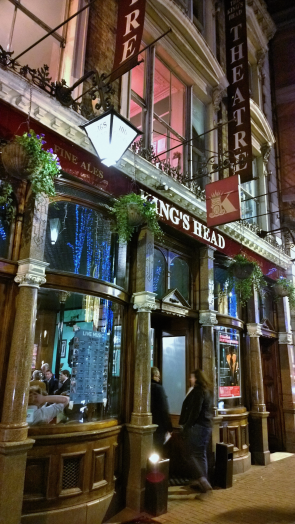Upper Street
Upper Street, Islington
The central thoroughfare of Islington, stretching for one mile between Highbury Corner and the junction with Liverpool Road at its southern end

Honorius, Archbishop of Canterbury, established Islington’s parish of St Mary here in 628, under the aegis of St Paul’s Cathedral. St Mary’s church was originally called Our Lady of Islington.
Upper Street was for centuries part of the cattle-droving route to Smithfield and a King’s Head tavern is supposed to have existed from about 1543. There used to be a Lower Street too, but this is now Essex Road.
By the early 17th century Upper Street had a sprinkling of gentlemen’s houses and tradesmen’s cottages. But before the century was out the gentry had begun to depart and several of their houses were converted to inns.
Sir John Miller’s house, which stood near Theberton Street, had become the Pied Bull by 1725. An unsubstantiated story persists that this had earlier been the residence of Sir Walter Raleigh.
A variety of developers put up short rows of houses for the middle classes and by 1735 Upper Street was almost entirely built up, although much of the hinterland remained open. Islington became a popular place for Londoners to spend a day out and the number of public houses multiplied.
Dr William Pitcairn established a four-acre botanical garden opposite Cross Street and in 1777 the Marquess of Northampton, lord of the manor of Canonbury, granted Islington Green to the vestry.
During the 19th century Upper Street’s rows of houses were rebuilt as commercial premises, at first catering for the growing local population and later attracting customers from further afield. The street’s non-stop commerce prompted the rector of St Mary’s church to found the Lord’s Day Observance Society in 1831.
Despite Islington’s ever-diminishing status as a residential district, Upper Street’s outfitters and drapers grew in prestige, and their trousseaux and underclothes were especially highly prized. A section of the street was rebuilt in widened form and lined with substantial terraces of shops, while smart new frontages were added to the surviving older premises – but at night the many public houses catered to an increasingly disreputable clientele.
“Yonder is the ‘Devil’s Mile,’ which extends from here [the Angel] to the ‘Cock’ at Highbury, and along which we will steadily make our way. This is not my title; North Londoners themselves have designated it as such. It is an appropriate name, however, for the devil’s imps seem to perambulate through it, both day and night. It’s past midnight, and look at these young girls with their besotted countenances.”
Henry Vigar-Harris, London at Midnight (1885)
In the mid-1920s the Church Missionary Society College was replaced by Sutton’s model dwellings, a pleasing estate with Arts and Crafts details, and Islington town hall was built. Meanwhile, the big stores lost the battle with their rivals ‘up west’ and Upper Street went into a slow decline that lasted until Islington’s gentrification presented new opportunities from the 1960s onwards.
The King’s Head began to stage theatrical performances in 1970, the Hope and Anchor became one of London’s leading pub venues for the burgeoning punk rock scene in 1977 and Sisterwrite was Britain’s first feminist bookshop when it opened on Upper Street in 1978.
Upper Street’s variety of restaurants is now almost unrivalled outside the West End and there are all kinds of specialist shops, notably the antiques traders of Camden Passage. The street is home to the Union Chapel, the Screen on the Green, the Business Design Centre and Islington Assembly Hall (in the south wing of the town hall building). The Almeida Theatre is just around a corner. Also close by, the Little Angel Theatre specialises in puppetry.
Between Almeida Street and Theberton Street the four-acre site of the former North London Sorting Centre is presently being redeveloped as Islington Square. (Half the major residential projects in London seem to be called Something Square nowadays.) The £400m scheme includes 263 homes (at prices averaging over a million pounds each), retail outlets, restaurants, leisure facilities and about a million pounds’ worth of new public artwork. Located in and around four existing Edwardian buildings, Islington Square is set to be completed in late 2017.
Charles Wesley wrote Hark the Herald Angels Sing while serving as assistant curate at St Mary’s church in 1738.
The illustrator Kate Greenaway came to live on Upper Street with her family in 1852.
In 1994 Tony Blair and Gordon Brown dined at Upper Street restaurant Granita, where they allegedly thrashed out the deal that made Blair prime minister and Brown chancellor.
